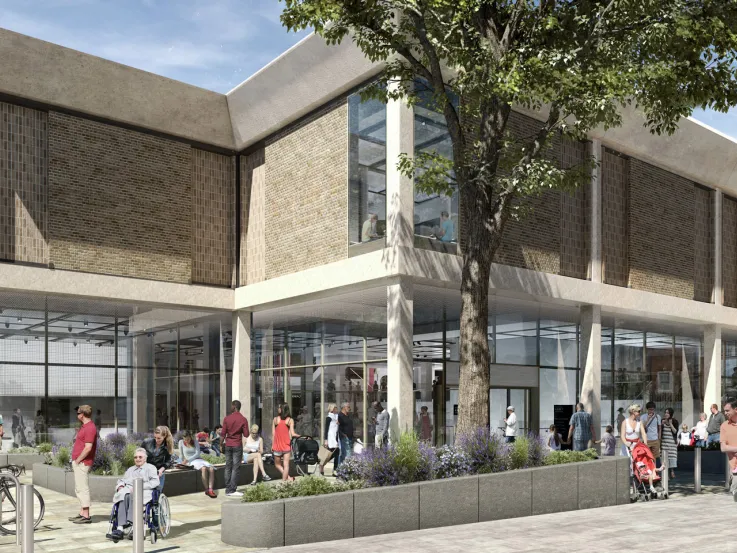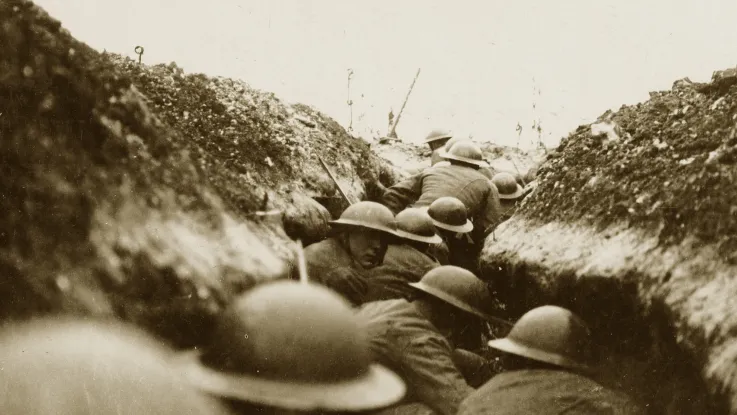Doncaster soldier’s correspondence reveals what happened after his death in 1917
Today (23 November 2017) the National Army Museum is publishing a collection of objects which reveal the death of an ordinary soldier, Private Percy Ottley, and the impact on his loved ones at home.
Ottley was killed at the Battle of Cambrai on 23 November 1917. Several items of correspondence between the government and his widow reveal what happened after a British soldier died during the First World War. Once confirmed dead, the next of kin were informed of the terrible news. Officers’ families were informed by telegram, other ranks next of kin were told by receipt of Army Form B104-82. A letter sent to Ottley’s widow from his commanding officer said:
On 23 November during a bombing attack on an enemy position we met with stubborn resistance. At this point your husband in a gallant endeavour to support his comrades was shot by a sniper, death being instantaneous. His presence amongst us was greatly appreciated and I know he is sadly missed by all his friends out here as well as at home. I trust you will be able to gain a little consolation from the knowledge that he died the death of a brave soldier and a gentleman.
Whether Ottley’s death was ‘instantaneous’ is unknown but officers usually tried to spare the relatives of deceased soldiers the grim details of men’s death when they wrote to them.
The Graves Registration Units would then inform the next of kin about the place of burial of the soldier. Sadly, Ottley’s body was never recovered for interment. Instead his name was listed on the Cambrai Memorial at Louveral along with 7,000 other soldiers from Britain and South Africa who died during the Battle of Cambrai and whose graves are unknown.
The collection also reveals what measures the government took to assist families left behind after a soldier’s death. The Museum’s Soldiers’ Effects Records show that Mrs Ottley received £5 7 shillings and sixpence from Percy’s back pay and accrued allowances. Other papers show that she then received a weekly pension of 13 shillings and nine pence, a War Gratuity of £3 and information on how to obtain her husband’s campaign medals.
Mrs Ottley also received a Memorial Plaque (popularly known as the ‘Dead Man’s Penny’), along with a scroll. These were posted to families in 1919-20. Over 1.3 million were sent across the British Empire to commemorate those who had fallen and acknowledge their sacrifice. They were accompanied by a ‘King’s Message’, which contained a facsimile signature of King George V.
As late as 1928, Mrs Ottley was still receiving information about plans for the Cambrai Memorial and how she could visit the grave of her husband. Ottley was also commemorated with an alabaster panel at the church of St Mary and Martin in Blyth, Nottinghamshire, and by an inscription on the grave of his grandmother Emma Ottley at St John the Baptist’s Church in Adel, Yorkshire.
Dr Matthew Thomas, online content curator at the National Army Museum says ‘The correspondence and acknowledgement that Ottley’s widow received from the government would have been an experience shared by millions during the First World War. It is the stories of these ordinary soldiers, and the impact of their death on families, that is now often forgotten.’
Notes to Editors:
For more information, please contact the National Army Museum press office at pr@nam.ac.uk or 020 7881 2433.
About Private Percy Ottley:
Percy Crofts Ottley was born on 31 August 1885 in Ranskill, Nottinghamshire. On 28 September 1909 he married Ethel Annie Camm at St Martin’s Church, Womersley, Yorkshire and they had a daughter, Mary, on 6 December 1910.
Ottley joined the army on 3 February 1916 and trained for a year before being sent to France. He died on 23 November 1917 during an attack on Bourlon Rouge, part of the Battle of Cambrai.
National Army Museum
The National Army Museum is the leading authority on the history of the British Army. Founded in 1960 by Royal Charter and established for the purpose of collecting, preserving and exhibiting objects and records relating to the Land Forces of the British Crown it is a museum that moves, inspires, challenges, educates and entertains. The Museum seeks to tell the story of the British Army, the personal experiences of the soldiers who have served in it and to connect the British public and its army demonstrating how the role of the army and its actions are still relevant today.
Heritage Lottery Fund
Thanks to National Lottery players, we invest money to help people across the UK explore, enjoy and protect the heritage they care about - from the archaeology under our feet to the historic parks and buildings we love, from precious memories and collections to rare wildlife.
For more information, please contact Katie Owen, HLF press office on Tel: (020) 7591 6036 out of hours mobile: 07973 613820.



